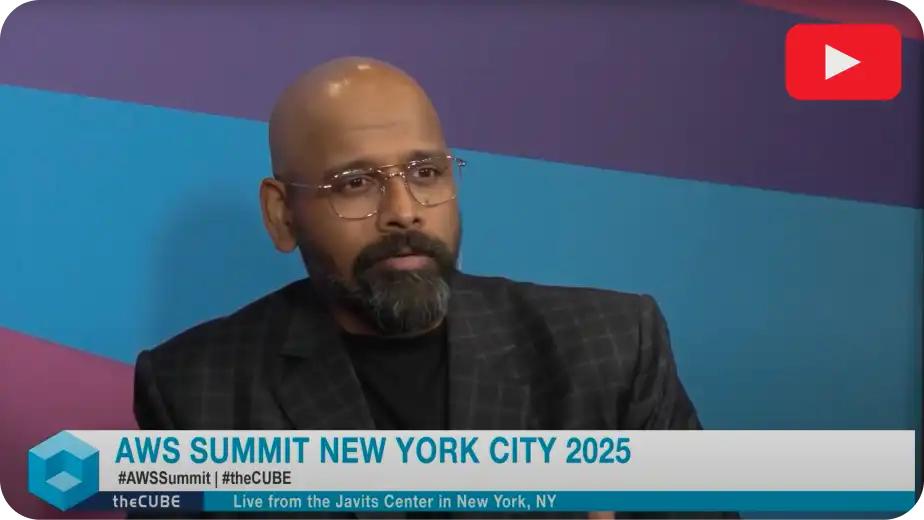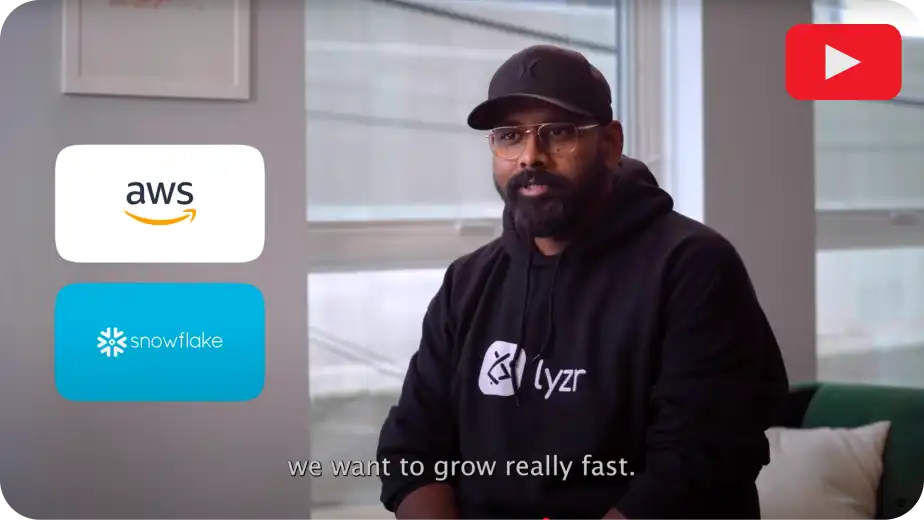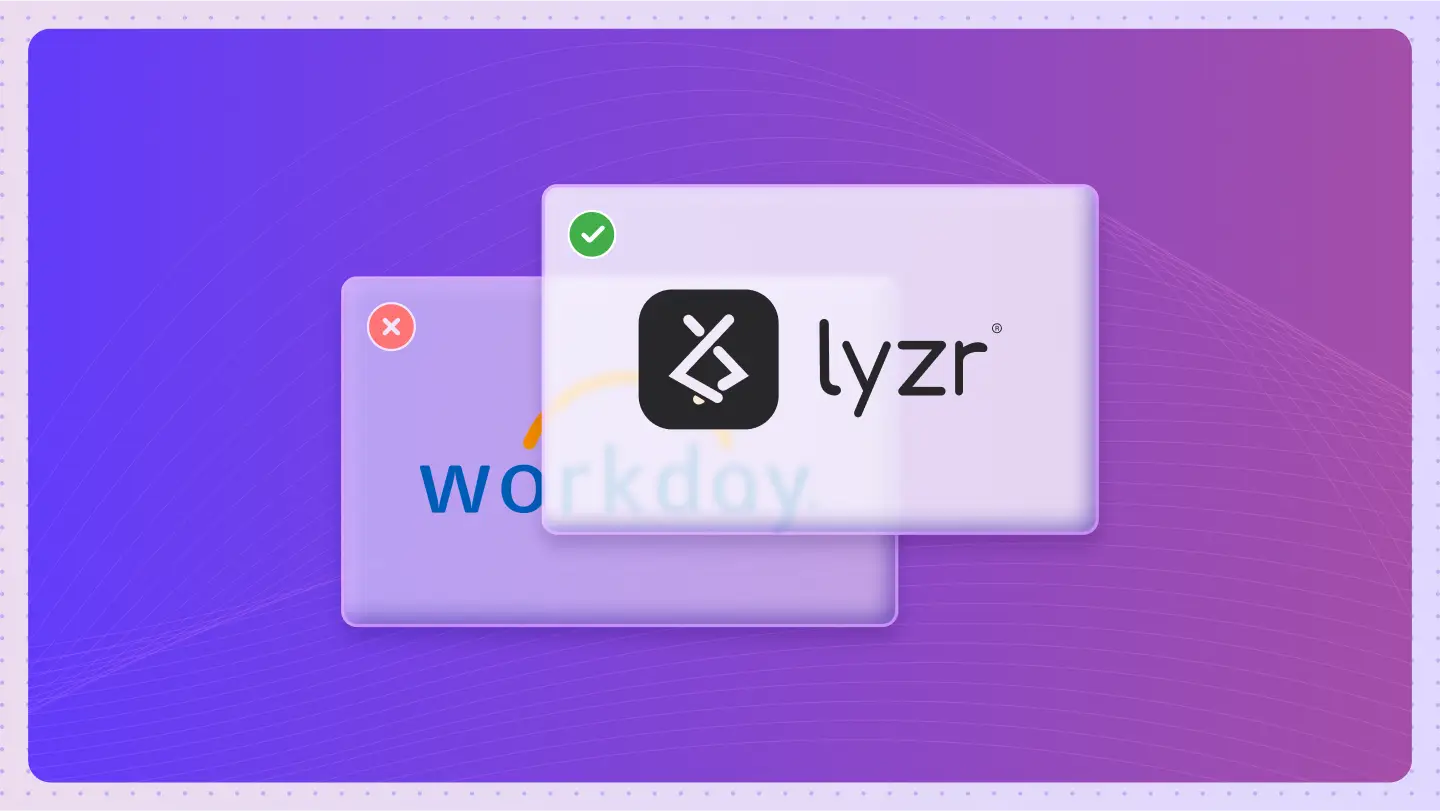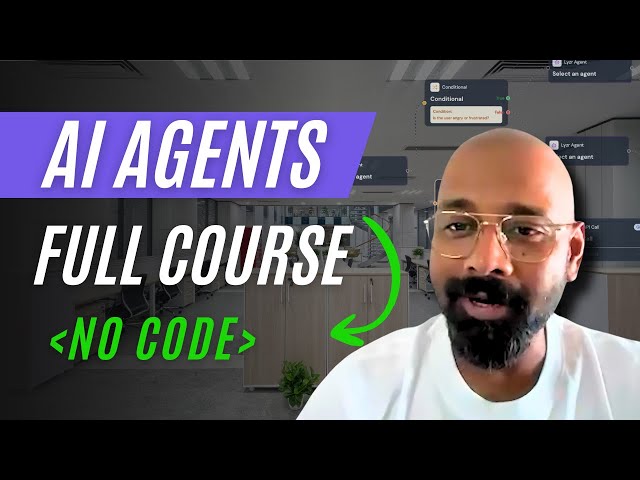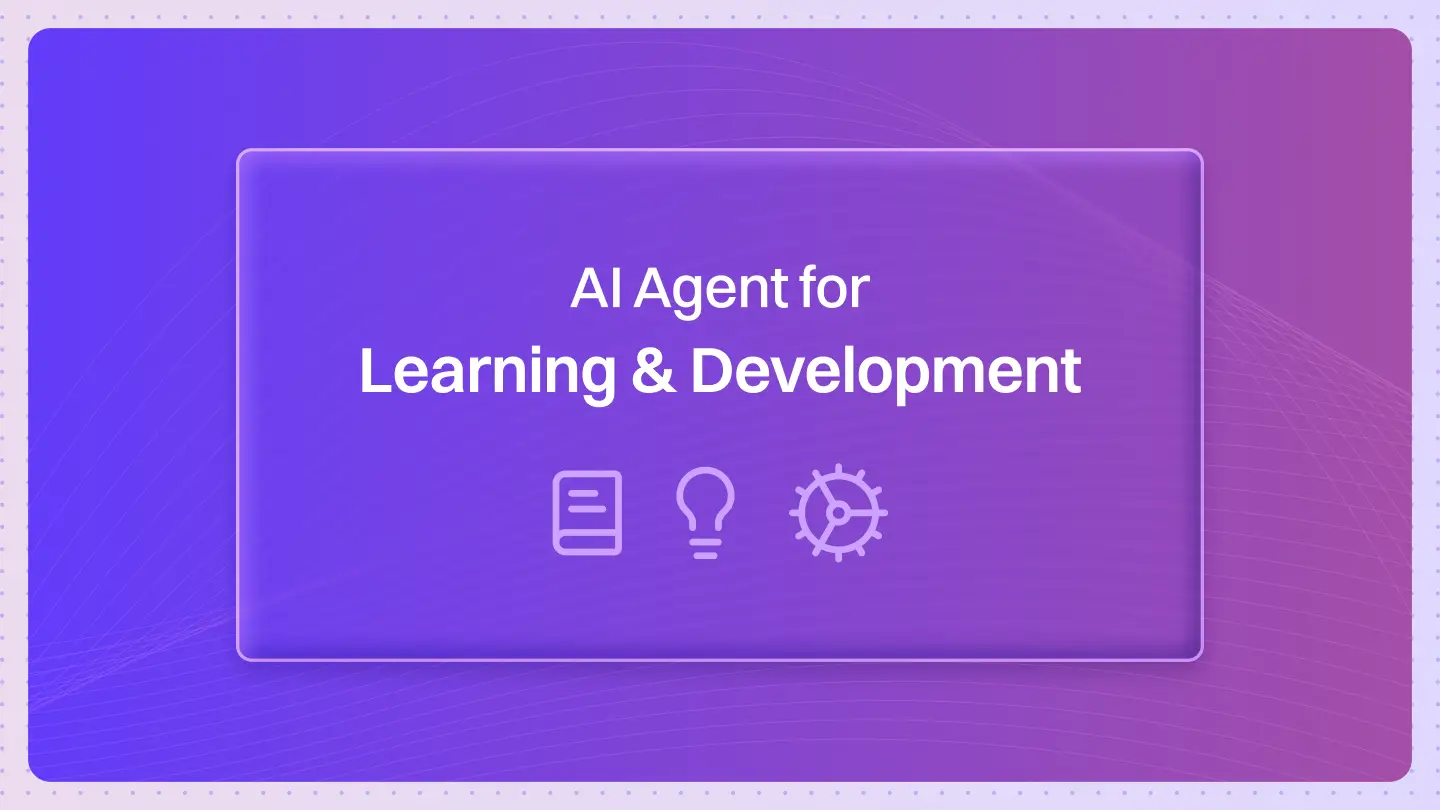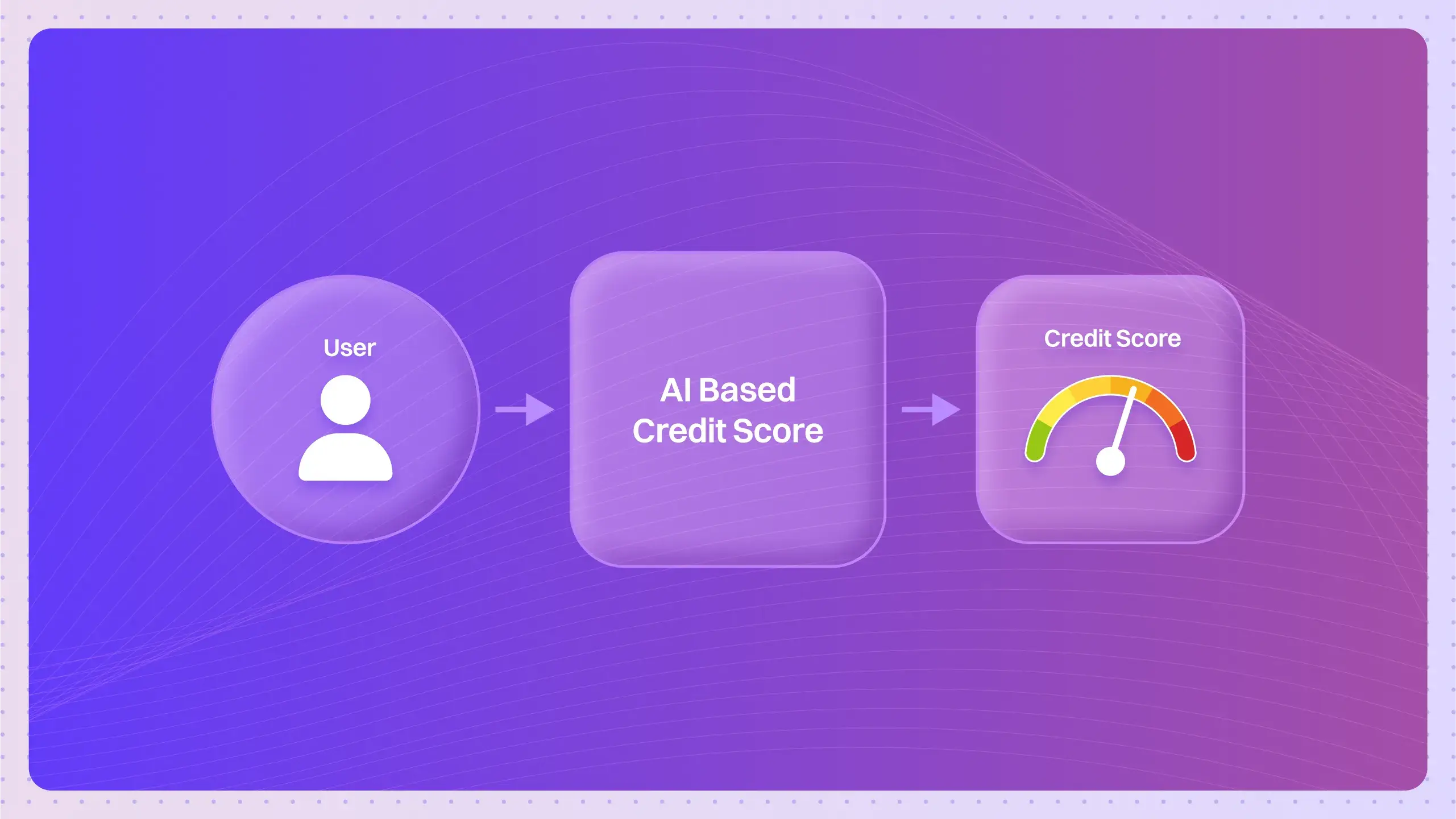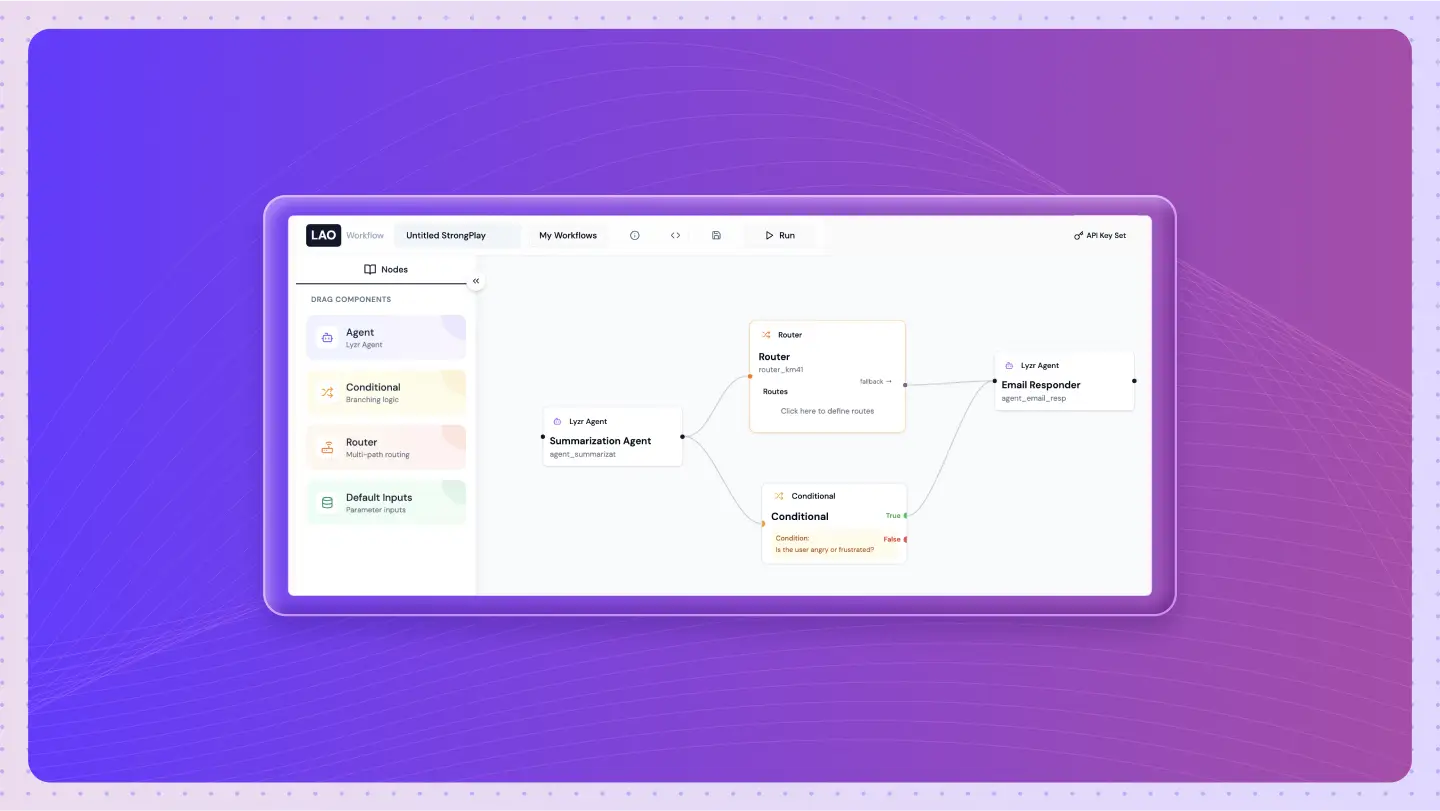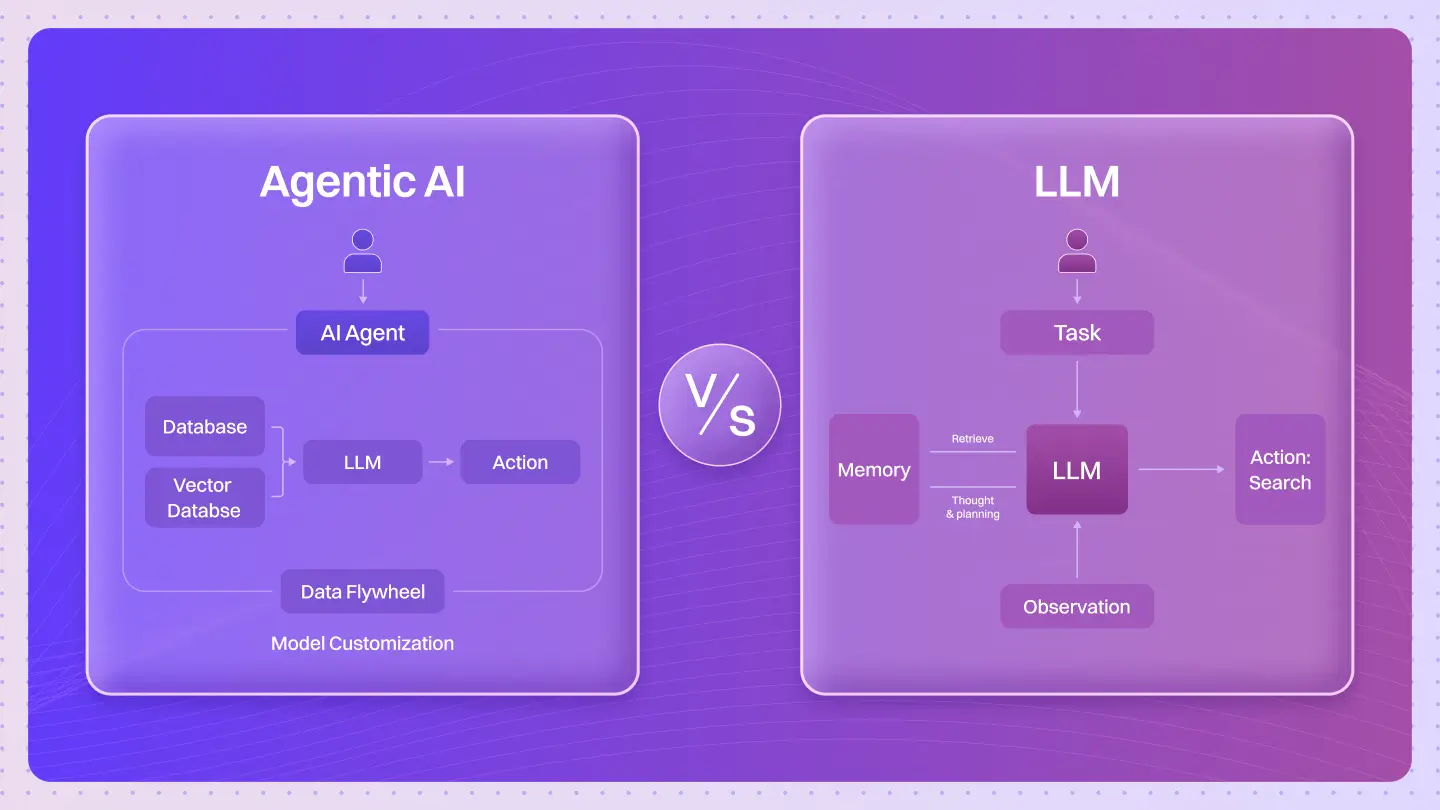Table of Contents
ToggleYou wouldn’t demolish a 50-story skyscraper just to upgrade the elevators, would you? The idea is absurd. You have a solid steel frame, a foundation that works. The smart move is to keep that foundation and build a modern, intelligent interior around it.
Yet, in the world of HR technology, we do the equivalent of demolition all the time.
When your current Human Resources Information System (HRIS) feels clunky, when adoption is low and employees are frustrated, the conventional wisdom kicks in. You conclude you need a complete overhaul. The search begins for a Zoho People alternative, or a replacement for whatever system you have, driven by the belief that a new, all-in-one platform will finally solve all your problems.
But what if the problem isn’t the building itself? What if the real issue is the frustrating, inefficient way people are forced to navigate it? What if, instead of a high-risk demolition, you could simply install a smarter, faster way to get where you need to go?
The Real Cost of Finding a Zoho People Alternative
Let’s be direct. The traditional “rip and replace” approach to HR technology is a fundamentally broken strategy. It’s an exhausting, expensive cycle of selecting, implementing, and then struggling with a massive new system. It’s an HR tech treadmill: a lot of motion, a lot of expense, but no real forward progress.
This isn’t just a feeling; it’s a statistical reality. The industry is littered with projects that promised transformation but delivered frustration.
A staggering 70% of major software initiatives fail to fully meet their original business goals. Worse, as many as 25% of these projects fail catastrophically, leading to massive financial loss and operational chaos. These projects are notorious for running off the rails. Research from Josh Bersin shows that nearly one-third of HR tech projects go over budget, and a majority, 53%, miss their deadlines.
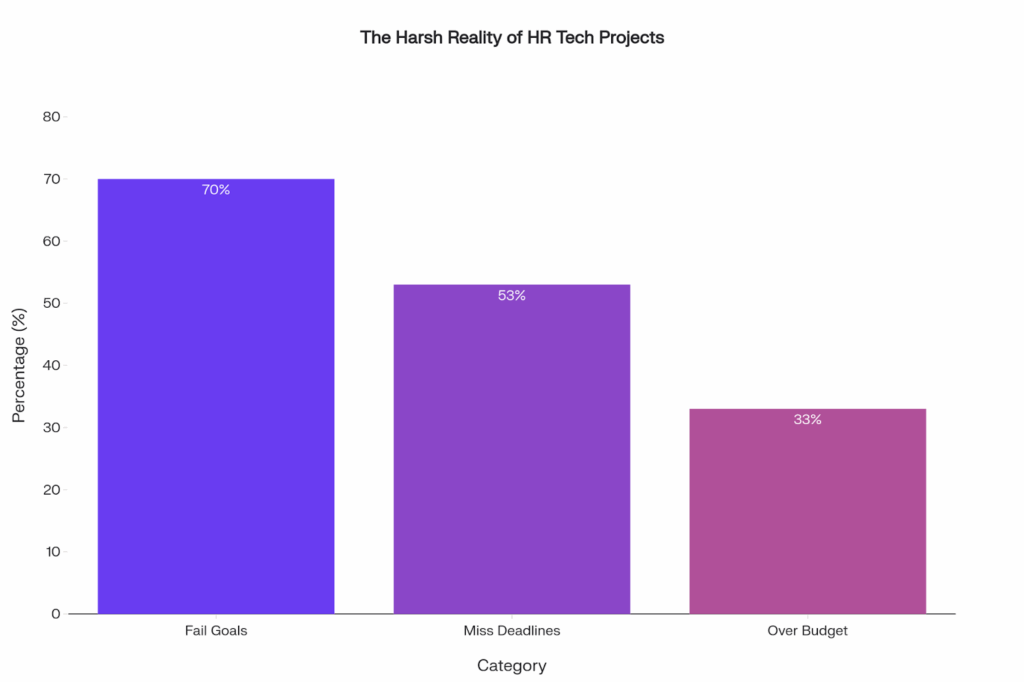
The real tragedy is that the pain doesn’t end when the system finally goes live. The same research found that 42% of HR tech projects are considered failures within two years, not because the software is broken, but because employees simply refuse to use it.
This points to the root cause of the crisis. It’s a crisis of adoption, not just technology. A 2022 Gartner survey found that the average HRIS is used by only 32% of employees. Think about that. A multi-million rupee, multi-year investment is actively used by less than a third of the people it’s meant to serve. The failure is baked into the model, which prioritizes organizational checklists over the actual human experience.
Deconstructing the Monolith: The Zoho People Model
To understand why this happens, let’s use Zoho People as a case study. It’s a powerful and popular platform, representative of the monolithic, all-in-one HRIS model.
On the surface, the promise is compelling. Zoho People offers a comprehensive suite of features covering the entire employee lifecycle. It handles core HR functions like employee database management, attendance, and leave tracking. It has modules for performance management, onboarding, and even a help desk. For many routine tasks, users find it has a user-friendly interface.
It aims to be the single source of truth for all things HR. But it’s this very “all-in-one” ambition, built on a rigid, monolithic architecture, that creates the cracks in the foundation.
The Problem with Portals
The primary way employees interact with a system like Zoho People is through a self-service portal. While intended to empower them, these portals often become the single biggest source of friction.
A Forrester study revealed a critical truth: an employee’s satisfaction with their technology has the single biggest impact on their overall employee experience. When that technology creates roadblocks, satisfaction plummets.
The disconnect comes down to a simple conflict between what an employee wants and what the portal demands.
| The Employee’s Reality | The Portal’s Process |
| To work where the work happens: in a flow state within Slack or Microsoft Teams. | Leave your primary workspace and log into a separate system. |
| To get an immediate answer and get back to the actual job they were hired to do. | Navigate a complex menu system to find a specific document. |
| To feel part of a positive, seamless culture (which 81% of employees see as a priority). | A frustrating experience that is a tax on their time and attention. |
This is more than an inconvenience. It is a fundamental misunderstanding of how modern work gets done.
So, where does this leave HR and IT teams who are stuck in the middle?
The Rigidity of the Monolith
This portal-centric model is a direct symptom of the underlying monolithic architecture, which leads to two critical weaknesses repeatedly flagged by users:
- Limited Customization: A common complaint about Zoho People is its lack of deep customization. The system dictates the workflow. If your organization’s processes don’t fit neatly into its pre-built modules, you’re forced to adapt your processes to the software, not the other way around. This one-size-fits-all approach is the core limitation of a monolith.
- Integration Friction: The promise of an “integrated suite” often falls apart in the real world. Users report challenges integrating Zoho People with other critical business systems, and sometimes even with other applications within the Zoho ecosystem itself. This creates data silos and forces teams to build and maintain brittle, custom integrations that are a constant headache for any CTO.
These limitations aren’t just inconveniences; they have staggering hidden costs. Research from Nucleus Research shows that sticking with inadequate legacy systems leads to massive productivity loss and forces companies to hire, on average, one to three additional full-time HR employees just to manage the manual workarounds and administrative burden created by the software’s inefficiencies.
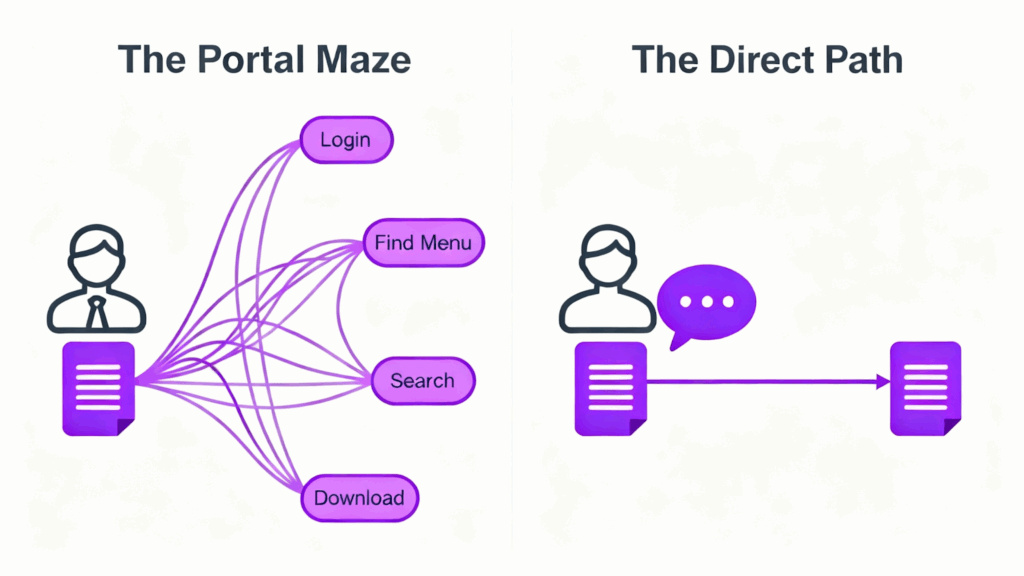
The Great Reframe: From Programmed Rules to Autonomous Reasoning
The solution to this problem is not a better monolith. It’s a fundamentally different approach to automation itself. For years, HR automation has meant one thing: workflow automation.
The Old Way: Workflow Automation
Systems like Zoho People, and even tools like Zapier, are built on workflow automation. This means a human must manually define every single step, rule, and condition. The logic is rigid and deterministic: If This, Then That.
For example, a simple leave request workflow looks like this:
- IF an employee submits the “Leave Request” form,
- AND the “Start Date” is after today,
- THEN send an approval email to their direct manager.
This works for simple, predictable tasks. But what happens if the employee has a negative leave balance? Or if their request conflicts with a critical project deadline? Or if two team members request the same time off? Each exception requires another manually coded IF/THEN rule, creating a brittle, complex web that is impossible to maintain.
The New Model: Agentic AI
Now, imagine a different way. This is Agentic AI. An agentic AI is an autonomous system that can plan, reason, and act to achieve a goal with minimal human intervention.It’s not just following a script; it’s understanding the objective and writing its own script to get there.
The conceptual shift is simple to explain but profound in its implications.
This 60-second explainer breaks down what makes autonomous agents fundamentally different from the workflow automation built into platforms like Zoho People. They don’t follow scripts. They pursue objectives.
Once you understand this distinction, the entire “rip and replace” debate becomes obsolete. You don’t need a better monolith. You need a smarter interface.
An agentic system operates on three core components :
- A Brain (LLM): It uses a Large Language Model to understand intent, reason through problems, and plan a course of action.
- Memory: It remembers past interactions to learn and improve over time.
- Tools (APIs): It can connect to and use other applications such as your calendar, your HRIS, your project management software to take real action in the world.
With an agentic AI, you don’t define the workflow. You state the goal. Instead of filling out a form, the employee simply says: “I need to take leave from June 5th to June 10th.”
The agent understands the goal and autonomously executes the steps:
- It reasons that it needs to check the leave policy.
- It uses a tool to access the HRIS and verify the employee’s current leave balance.
- It uses another tool to check the team calendar for conflicts.
- It formulates a request and routes it for approval, handling the entire process without a single pre-defined IF/THEN rule.
This is not an incremental improvement. It is a categorical leap in capability. It moves the value of automation from the tedious work of defining the ‘how’ to the strategic work of defining the ‘what’.
| Feature | Traditional Workflow Automation (e.g., Zoho People) | Agentic AI Automation (e.g., Lyzr’s Diane) |
| Decision Logic | Pre-defined, rule-based (If-Then) | Goal-oriented, predictive, and adaptive |
| Human Input | Requires manual setup of every step and condition | Requires a high-level goal; determines steps autonomously |
| Handling Complexity | Brittle; fails on edge cases not explicitly programmed | Robust; can reason through unexpected variables |
| Core Technology | Boolean Logic, Simple APIs | Large Language Models (LLMs), Memory, Tool Use |
| Primary Function | Task Execution | Problem Solving & Goal Achievement |
This isn’t a theoretical leap. It’s an architectural reality.
Watch this 50-second demonstration of how Diane operates as a modular suite of 17 specialized agents, not a single chatbot. Each agent autonomously handles discrete HR tasks like screening, scheduling, policy resolution, and collaborates with others to complete end-to-end workflows.
This is the difference between programming every step and orchestrating strategic outcomes. This is the intelligent overlay that makes your HRIS actually work for your people.
The Smartest Strategy Is Not to Demolish, But to Augment
This brings us to a fundamentally better approach. Instead of replacing your HRIS, you keep it as the stable system of record. It is the steel frame of your building.
Then, you layer an intelligent, conversational agent over the top.
This “Intelligent Overlay” becomes the new front door for all HR interactions. Employees stop logging into a clunky portal. They now ask a smart agent for help directly in Slack or Microsoft Teams, and the agent communicates with the backend systems to get things done.
It is a strategy that completely de-risks HR transformation. It is faster, cheaper, and avoids the chaos of a full replacement.
Let’s see what this looks like for a developer, Pricella, and her manager, Ryan.
| The Task | The Old Way: The Portal Maze | The New Way: The Conversational Agent |
| Pricella needs to know the policy for her learning and development budget. | Pricella leaves her work, logs into the HR portal, and searches for the right document. She messages Ryan, who tells her to file an HR ticket. The process takes half a day and involves three people pulled away from their actual jobs. | Pricella stays in Slack and asks the agent: “Can I use my L&D budget for a Coursera certification?” The agent confirms the policy, states the spending limit, and offers to create and send a pre-approval request to Ryan on her behalf. |
| Total Time to Resolution: | 4+ Hours | 2 Minutes |
This is the power of turning HR from a destination you must visit into an ambient service that is always there. Over 80% of EX leaders agree that effective self-service tools like this cause a significant increase in employee satisfaction.
| Metric | Monolithic Replacement (“Rip and Replace”) | Intelligent Overlay (Augmentation) |
| Implementation Time | 18-24+ months | Weeks to a few months |
| Upfront Cost | High (Software, Consultants, Training) | Low (SaaS subscription model) |
| Risk Profile | Extremely High (>70% failure rate) | Low (Does not disrupt core systems) |
| Time-to-Value | 2+ years, if successful | Immediate (Solves specific pain points quickly) |
| User Adoption | Very Low (Avg. 32% use) | High (Integrates into existing workflows like Slack/Teams) |
| Organizational Disruption | Massive (Retraining, process re-engineering) | Minimal (Enhances existing processes) |
This strategy future-proofs your HR tech stack. It decouples the user experience from the underlying system of record. You can swap out your backend HRIS in five years without ever disrupting the seamless experience your employees have come to expect.
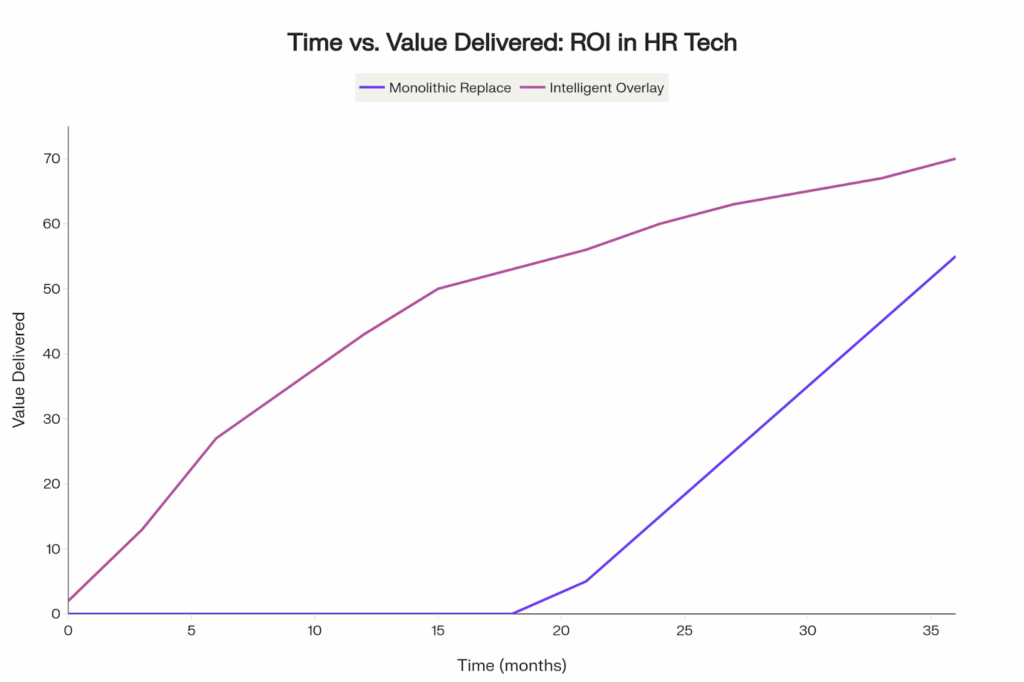
Activating Your Agentic Workforce with Lyzr’s Diane
This intelligent overlay strategy is precisely what Lyzr’s agentic AI solutions are designed to enable. Our agentic HR assistant, Diane, is not another chatbot. It is an autonomous agent built to understand complex goals and execute multi-step tasks across your entire tech stack.
Diane is built API-first and is modular by design, meaning it’s engineered to integrate with and enhance the systems you already have, including Zoho People, Workday, or any other HRIS. It’s not a threat to your core system; it’s a force multiplier that unlocks its true value.
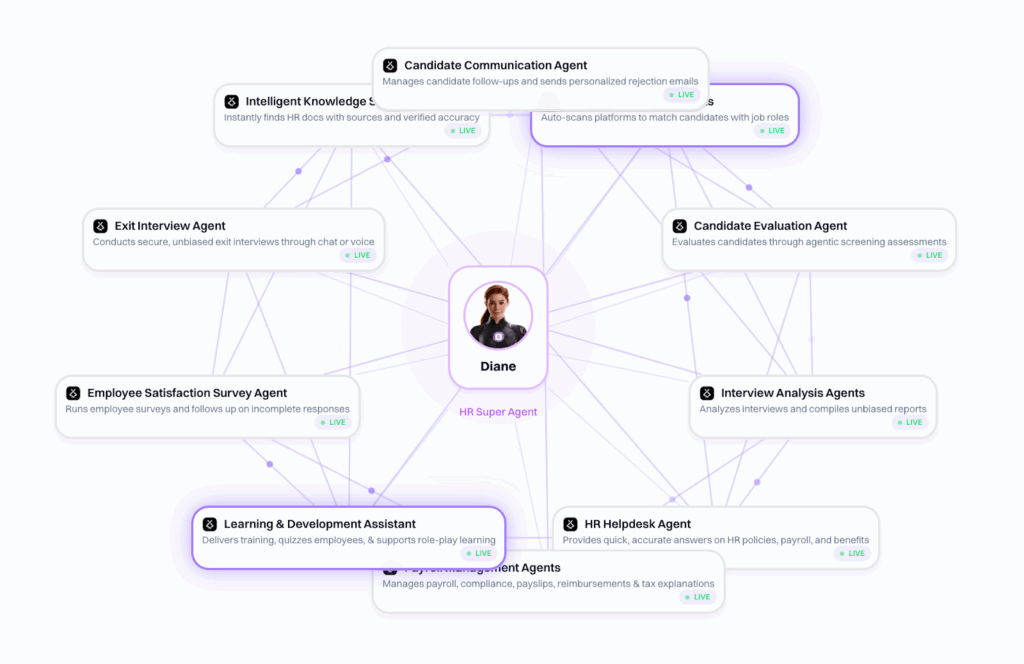
With Diane, you can move beyond simple queries and automate high-value, complex processes:
- Autonomous Candidate Screening: Diane can analyze resumes against job descriptions, conduct initial screening conversations via chat, assess qualifications, and schedule qualified candidates directly into interviewers’ calendars.
- Proactive, Personalized Onboarding: Instead of a static checklist, Diane can create a dynamic, personalized onboarding journey for each new hire. It can proactively introduce them to their team, assign relevant training, and answer their questions 24/7, ensuring they feel supported from day one.
- Intelligent Policy Resolution: Employees can ask complex, multi-part questions like, “My wife is having a baby in Dallas next month. What’s our paternity leave policy, how does it interact with our work-from-anywhere policy, and what documents do I need to submit?” Diane can synthesize information from multiple documents to provide a single, accurate, personalized answer.
- Automated Exit Interviews: Diane can conduct consistent, unbiased exit interviews via a conversational interface. It gathers structured data that can be analyzed to uncover trends in attrition, providing actionable insights to leadership that would be lost in manual notes.
The business impact is not theoretical. Companies implementing agentic AI solutions report 30-60% productivity gains in automated workflows. Case studies show tangible results like an 80% reduction in processing costs and 90% faster customer response times. The payback period for these investments is not years, but months, often averaging just 6-12 months.
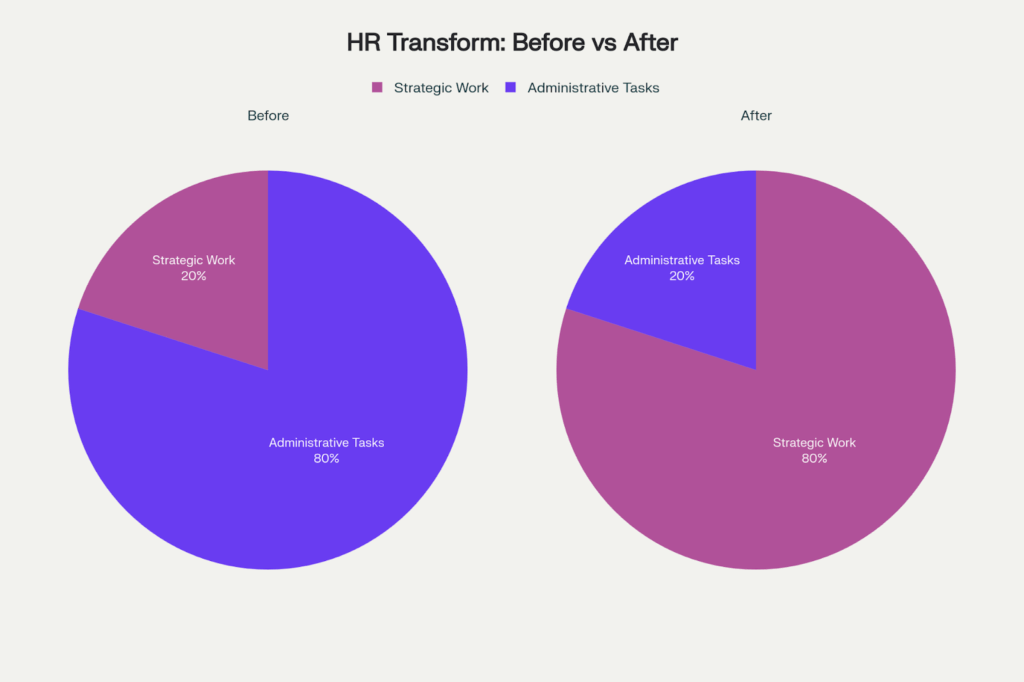
Every interaction with Diane generates valuable data. By analyzing the questions employees ask, you can uncover hidden points of friction in your organization. A sudden spike in queries about the expense policy might reveal a confusing update, allowing HR to proactively clarify it. Your HR function transforms from a reactive cost center into a proactive, strategic intelligence hub.
The Smartest Zoho People Alternative: Evolve, Don’t Replace
The debate is no longer about which monolithic system is the best Zoho People alternative. That’s the wrong question. The real strategic question is how quickly you can deploy an intelligent, agentic layer to unlock the value trapped in the systems you already own.
Stop planning another high-risk, multi-year implementation. The cycle of demolition and reconstruction is too slow and too costly for the modern enterprise.
The smarter path is to evolve. Instead of searching for another monolith, identify the single biggest point of friction in your current HR process. Is it leave management? Is it the endless policy questions?
Pinpoint that one frustrating process. Then, book a demo to see how an agentic assistant like Diane can solve that specific problem in weeks, not years. Keep your foundation. But it’s time to install a better elevator.
Frequently Asked Questions (FAQs)
1. How is Lyzr’s Diane different from the ‘Zia’ AI bot included in Zoho People?
The core difference is agentic capability versus chatbot functionality. Zia is a helpful chatbot designed to answer simple, factual questions based on a knowledge base. It follows pre-programmed conversational flows. Diane is an autonomous agent. It can understand a complex goal, plan a multi-step solution, and use tools (like APIs to Zoho People, your calendar, etc.) to execute that plan without a script. Zia finds answers; Diane gets work done.
2. Is this secure? We can’t have sensitive employee data going through a third-party AI.
Security is paramount. Lyzr’s platform is built with enterprise-grade security and data privacy at its core. All data is encrypted in transit and at rest, and we adhere to strict compliance standards like GDPR. The agent operates with role-based access controls, meaning it can only access the same information that the employee interacting with it is authorized to see, ensuring sensitive data remains secure within your existing systems.
3. Our current HRIS is a mess. Won’t layering something on top just add more complexity?
It actually does the opposite. The agentic overlay is designed to abstract away the complexity of the backend. For your employees, Diane becomes the single, simple, and intuitive interface for all HR needs. They no longer have to learn the confusing navigation of your HRIS. The agent handles the complexity so your people don’t have to.
4. How difficult is the integration process with our existing systems like Zoho People?
Lyzr is built API-first, specifically for this purpose. Our platform is designed for seamless integration with modern, API-driven applications as well as legacy systems. We have pre-built connectors and a dedicated team to ensure that connecting Diane to your core HRIS, communication platforms, and other tools is a fast and straightforward process.
5. What is the real ROI? Can we justify the cost?
The ROI is multi-faceted and rapid. First, there’s direct cost avoidance; by automating manual tasks, you can avoid hiring the 1-3 additional HR staff often needed to manage inefficient systems. Second, there are massive productivity gains across the entire workforce, with studies showing 30-60% improvements. Finally, by improving the employee experience, you boost retention and engagement. The payback period is typically under 12 months, making the business case compelling.
6. Do we need a team of AI experts to manage this?
No. We understand that most companies have a skills gap when it comes to AI. Lyzr provides a managed solution. Our team handles the complexities of enterprise agent development, deployment, and maintenance. You bring your HR process expertise; we bring the AI expertise.
7. Can an AI really handle the nuances of our unique company culture and policies?
Absolutely. This is a key strength of an agentic approach. Diane is trained specifically on your company’s documentation such as your employee handbook, your policy PDFs, your internal knowledge base. It learns your unique rules, processes, and even your tone of voice, ensuring its responses and actions are perfectly aligned with your culture.
8. What happens if the agent makes a mistake?
Our systems are designed with a human-in-the-loop approach for critical workflows. You can configure rules where the agent must seek human approval before taking certain actions. Furthermore, every interaction is a learning opportunity. The agent’s self-correcting behavior means it learns from mistakes and its accuracy improves over time.
9. We’ve already invested millions in our current HRIS. Isn’t this just throwing good money after bad?
This is the best way to protect your existing investment. Your HRIS holds your valuable data, but its poor user interface means its value is locked away. The agentic overlay is the key that unlocks the ROI you were promised. It finally makes your powerful backend system usable and efficient for the entire organization.
10. Why not just wait for Zoho to build better AI into their own platform?
The challenge is architectural, not just a feature. A monolithic platform’s primary goal is to keep you within its own closed ecosystem. True agentic AI thrives in an open, best-of-breed environment, orchestrating work across dozens of different tools (Slack, Teams, Jira, Google Workspace, etc.). Lyzr is designed to be the neutral, intelligent orchestrator for your entire tech stack, not just one part of it. This is a fundamentally different and more powerful vision for the future of work.
Book A Demo: Click Here
Join our Slack: Click Here
Link to our GitHub: Click Here

